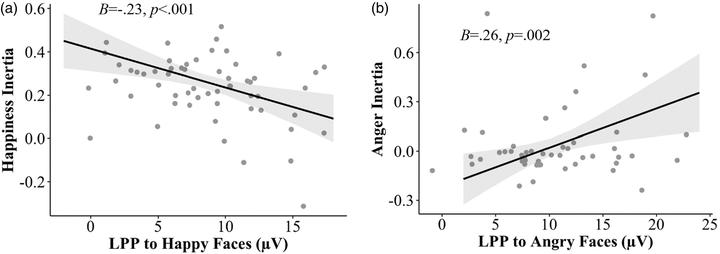Neurophysiological responses to emotional faces predict dynamic fluctuations in affect in adolescents

Abstract
The ability to accurately identify and interpret others' emotions is critical for social and emotional functioning during adolescence. Indeed, previous research has identified that laboratory-based indices of facial emotion recognition and engagement with emotional faces predict adolescent mood states. Whether socioemotional information processing relates to real-world affective dynamics using an ecologically sensitive approach, however, has rarely been assessed. In the present study, adolescents (N = 62; ages 13–18) completed a Facial Recognition Task, including happy, angry, and sad stimuli, while EEG data were acquired. Participants also provided ecological momentary assessment (EMA) data probing their current level of happiness, anger, and sadness for 1-week, resulting in indices of emotion (mean-level, inertia, instability). Analyses focused on relations between (1) accuracy for and (2) prolonged engagement with (LPP) emotional faces and EMA-reported emotions. Greater prolonged engagement with happy faces was related to less resistance to changes in happiness (i.e., less happiness inertia), whereas greater prolonged engagement with angry faces associated with more resistance to changes in anger (i.e., greater anger inertia). Results suggest that socioemotional processes captured by laboratory measures have real-world implications for adolescent affective states and highlight potentially actionable targets for novel treatment approaches (e.g., just-in-time interventions). Future studies should continue to assess relations among socioemotional informational processes and dynamic fluctuations in adolescent affective states.